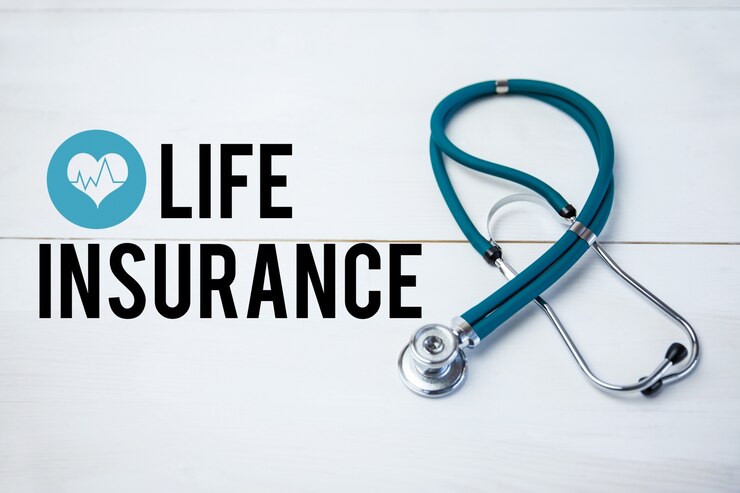- Limited coverage: They may not cover essential health benefits, pre-existing conditions, or prescription drugs.
- High out-of-pocket costs: You could face large deductibles, copays, and coinsurance for covered services.
- No guaranteed renewal: They can cancel your coverage or refuse to renew it due to health problems.
- Lack of regulation: They may not be subject to the same consumer protections as ACA plans.
Therefore, I strongly recommend carefully considering the risks and benefits of any alternative before choosing it over an ACA plan.
Here are 20 potential alternatives, but remember to research each one thoroughly before making a decision:
ACA-compliant options:
- High-deductible health plans (HDHPs) with Health Savings Accounts (HSAs): Can save money if you’re healthy, but come with high deductibles.
- Private Medicare Advantage plans: Can offer broader coverage than traditional Medicare, but may have higher premiums.
- Employer-sponsored health insurance: Offered by your employer, often at a discounted rate.
Limited benefit or non-ACA-compliant options:
- Short-term health insurance: Offers temporary coverage for up to a year, but often has limited benefits and excludes pre-existing conditions.
- Individual private health insurance: Can be expensive, but may offer more flexibility than ACA plans.
- Limited-duration benefit plans: Offer specific benefits for a limited time, like critical illness or accident coverage.
- Fixed indemnity plans: Pay a set amount for specific procedures, but don’t cover general medical expenses.
- Health care sharing ministries: Faith-based groups that share medical costs, but are not insurance and may have religious requirements.
- Direct primary care memberships: Pay a flat monthly fee for primary care services, but still need insurance for specialists and hospitalization.
- Discount medical programs: Offer negotiated discounts on medical services, but not actual insurance coverage.
Other options:
- Telehealth services: Consult doctors online or by phone, potentially lowering costs.
- Community health centers: Offer affordable care to low-income and uninsured individuals.
- Free clinics: Provide basic medical care for free or at a very low cost.
- Negotiating directly with providers: Get lower prices by paying cash for healthcare services.
- Preventive care: Focus on staying healthy to avoid major medical expenses.
- Financial assistance programs: May help pay for healthcare costs if you’re low-income.
- Medicaid: Provides health insurance for low-income individuals and families.
- CHIP: Provides health insurance for children from low-income families.
- Medicare: Provides health insurance for people over 65 and some younger people with disabilities.
- Military health care: For active-duty service members and their families.
Remember, the best option for you will depend on your individual circumstances and needs. Consider factors such as your age, health, budget, and risk tolerance when making your decision.I WROTE ANOTHER ARTICLE ABOUT >>>> Alternatives to accelerated reader for homeschool that you should read to learn more about alternatives.
Navigating the Maze: Exploring Alternatives to ACA Health Insurance.
For 25 years, I’ve been helping families navigate the intricate world of healthcare products and policies. With the ever-evolving landscape of the Affordable Care Act (ACA), many individuals are now finding themselves seeking alternative solutions to meet their unique needs. So, if you’re wondering what lies beyond the ACA, fear not! This guide will illuminate your options, empowering you to make informed choices about your health insurance journey.
Understanding the Current Landscape:
ACA Overview:
- Guaranteed Coverage: Pre-existing conditions are covered, and essential health benefits are mandated.
- Subsidies & Affordability: Income-based subsidies make premiums more manageable for qualifying individuals and families.
- Network Restrictions: In-network providers offer lower costs, but out-of-network care can be expensive.
Limitations & Eligibility:
- Cost Concerns: Some individuals may find themselves priced out of ACA plans, even with subsidies.
- Plan Choice: Options and network availability can vary significantly by location.
- Mandatory Participation: The individual mandate penalty was repealed, making enrollment non-mandatory (though still highly recommended).
Why Explore Alternatives?
- Cost Optimization: For healthy individuals facing higher premiums, finding a more budget-friendly option might be appealing.
- Flexibility & Control: Some may desire greater control over their healthcare choices and providers.
- Dissatisfaction: Navigating the ACA marketplace and limited network options can lead some to seek alternatives.

II. Alternative Options to Consider:
A. Private Health Insurance:
Pros:
- Wider Network Choice: Access to a broader range of healthcare providers than most ACA plans.
- Plan Variety: More diverse plan options to tailor coverage to specific needs.
- No Subsidies Required: Individuals ineligible for ACA subsidies can still explore private plans.
Cons:
- Potentially Higher Costs: Premiums can be significantly higher, especially for young, healthy individuals.
- Pre-existing Conditions: Coverage for pre-existing conditions may be limited or excluded.
- Medical Underwriting: Health history can affect eligibility and premium pricing.
B. Short-Term Medical Insurance:
Pros:
- Lower Initial Costs: Significantly cheaper premiums compared to ACA or private plans.
- Flexible Terms: Short-term plans offer durations ranging from several months to a year.
- No Pre-existing Condition Coverage: Can be suitable for healthy individuals with minimal healthcare needs.
Cons:
- Limited Coverage: Often excludes major illnesses and pre-existing conditions.
- Renewal Uncertainty: Plans may not be renewable, leaving you without coverage in the future.
- Regulatory Oversight: Less stringent regulations compared to ACA plans, potentially impacting consumer protections.
C. Health Savings Accounts (HSAs):
Pros:
- Tax-Advantaged Savings: Contributions to HSAs are tax-deductible, and qualified medical expenses are tax-free.
- Paired with High-Deductible Plans: Lower monthly premiums compared to traditional plans.
- Investment Potential: HSAs can be invested for long-term growth, potentially building healthcare savings.
Cons:
- High Deductible Costs: Individuals must be prepared to cover healthcare expenses up to the deductible amount.
- Limited Suitability: May not be suitable for individuals with frequent or high-cost medical needs.
- Potential Misuse: Temptation to use HSA funds for non-medical expenses can negate tax benefits.
D. Medical Cost-Sharing Programs:
Pros:
- Affordability: Lower monthly fees compared to traditional insurance.
- Community-Based Support: Sharing medical expenses among members fosters a sense of community and mutual support.
- Faith-Based Options: Some programs align with specific religious beliefs and values.
Cons:
- Limited Coverage: This may not cover all medical services or pre-existing conditions.
- Legal Considerations: Not regulated as insurance, potentially impacting consumer protections and enforceability.
- Financial Risk: Members share the financial burden of high-cost medical claims, potentially leading to unpredictable expenses.

E. Direct Primary Care (DPC):
Pros:
- Personalized Care: Direct access to a primary care physician for ongoing needs and preventive care.
- Lower Upfront Costs: Membership fees are typically more affordable than traditional insurance premiums.
- Predictable Expenses: Fixed monthly fees eliminate surprise medical bills.
Cons:
- Limited Scope of Services: DPCs typically do not cover specialist care or hospitalization.
- Out-of-Pocket Costs: Additional charges may apply for certain services or specialist referrals.
- Geographic Availability: DPC memberships may not be readily available in all areas.
III. Choosing the Right Path: Making an Informed Decision.
With a kaleidoscope of alternatives laid out before you, the next step is navigating the path toward the option that best aligns with your unique needs and circumstances. This requires a deep dive into self-assessment, meticulous comparison, and seeking expert guidance.
A. Self-Assessment: Knowing Yourself, Knowing Your Needs.
Before embarking on your exploration, a critical first step is to understand yourself and your healthcare needs. Ask yourself:
- What are my current and potential future health needs? Consider your family history, existing conditions, and lifestyle choices.
- What is my risk tolerance? Are you comfortable with the potential for higher out-of-pocket expenses in exchange for lower premiums?
- What is my budget? Be realistic about what you can afford monthly and potentially out-of-pocket in case of major medical needs.
B. Comparing Options: Apples to Apples (and Oranges to Avocados)
Once you have a clear picture of your needs, it’s time to compare the available options side-by-side. Here’s what to scrutinize:
- Premiums: How much will you pay monthly? Are there additional fees or surprise costs?
- Deductibles: How much will you need to pay out-of-pocket before insurance kicks in?
- Copays and coinsurance: What percentage of covered expenses will you be responsible for?
- Covered services: What types of medical care are included in the plan? Are there any exclusions or limitations?
- Network restrictions: Are you limited to specific providers or hospitals? How important is choice and flexibility?
- Customer service: Does the plan offer reliable and responsive customer support?
Remember, the cheapest option isn’t always the best. Consider the long-term implications and potential hidden costs to make a truly informed choice.

C. Consulting with Experts: Leaning on the Wisdom of Others.
Navigating the healthcare maze can be daunting. Don’t hesitate to seek guidance from qualified professionals:
- Benefits advisors: They can help you understand your options and make informed enrollment decisions.
- Insurance brokers: They can compare plans from different carriers and negotiate for better rates.
- Healthcare navigators: They can provide free or low-cost assistance with enrollment and understanding your coverage.
- Financial advisors: They can help you plan for future healthcare costs and consider tax implications of different options.
By taking advantage of expert advice, you can gain valuable insights and avoid costly mistakes as you chart your course towards healthcare security.
Remember, this is an ongoing journey, not a one-time destination. As your needs and circumstances evolve, revisit your choices and adjust your course as needed. With careful consideration, self-awareness, and the right support, you can navigate the ever-changing healthcare landscape and find the perfect alternative to ACA health insurance that empowers you to take charge of your well-being.
Stay tuned for the next section, where we’ll delve deeper into additional considerations and answer some burning questions to illuminate your path further.
IV. Additional Considerations: Beyond the Horizon.
While the options already explored offer a diverse landscape, your journey doesn’t end there. Here are some additional factors to consider as you chart your course:
A. State-Specific Programs and Subsidies:
- Some states offer their own health insurance programs or subsidies that may be more affordable than ACA plans. Explore your state’s healthcare exchange or consult with a local navigator to discover potential hidden gems.
B. Employer-Sponsored Insurance Options:
- If you’re employed, carefully assess your employer-sponsored health insurance plan. It might offer comprehensive coverage at a competitive price, potentially negating the need for alternative solutions.
C. The Evolving Landscape of Healthcare Reform:
- The healthcare landscape is constantly in flux. Stay informed about potential changes to the ACA, state programs, and other regulations that could impact your choices in the future.
V. Highly Relevant Questions: Your Burning Queries Answered.
Now, let’s tackle some pressing questions that might be swirling in your mind:
1. Tax Implications of Alternatives: Choosing an alternative may affect your tax situation. HSAs offer tax-advantaged savings, while short-term plans may not be deductible. Consult with a tax professional to understand the specific implications for your chosen option.
2. Pre-existing Conditions and Non-ACA Plans: Coverage for pre-existing conditions is a delicate matter. Some private plans offer limited coverage or exclusions, while others may outright deny individuals with pre-existing conditions. Carefully review plan details and consult with a healthcare navigator to ensure your needs are met.
3. Finding Reliable Online Resources: Several reputable websites offer tools and resources for comparing health insurance plans. Check out Healthcare.gov, eHealthInsurance.com, and NerdWallet for unbiased comparisons and expert guidance.

4. Long-Term Implications for Young and Healthy Individuals: Opting out of ACA coverage might save money initially, but it could lead to higher costs down the line. Pre-existing conditions could become uninsurable later, leaving you vulnerable to significant expenses. Weigh the short-term savings against the potential long-term risks before making a decision.
5. Balancing Affordability and Flexibility: Finding the sweet spot between affordable premiums and flexible coverage can be challenging. Consider your financial circumstances, risk tolerance, and healthcare needs to strike the right balance. Remember, some seemingly low-cost options might come with hidden limitations or higher out-of-pocket costs in the long run.
Choosing the right alternative to ACA health insurance is a personal journey. With self-awareness, careful consideration, and the right resources, you can navigate the options and chart a course toward optimal health and financial security. Remember, staying informed, seeking expert advice, and adapting as needed are key to navigating the dynamic world of healthcare.
This concludes our comprehensive guide to alternatives to ACA health insurance. We hope this journey has empowered you with the knowledge and confidence to make informed choices about your healthcare. Remember, you are not alone in this journey; utilize the resources available and reach out for guidance when needed. We wish you the best of health and a smooth path towards healthcare security.
As we’ve explored, navigating alternatives to ACA health insurance can feel like traversing a dense jungle. Reaching the optimal path requires not only considering broad options but also delving into the finer details that may sway your decision. This next section shines a light on these crucial details, equipping you with the granular knowledge to make a truly informed choice.
Unpacking the Nuances:
1. Pre-existing Conditions Revisited:
Beyond simply accepting or rejecting coverage, some plans offer creative solutions for pre-existing conditions. Conditional coverage, where pre-existing conditions are covered after a waiting period, might be feasible for individuals with stable health who can manage out-of-pocket costs in the interim.
Medical underwriting, where coverage is based on individual health history, can lead to higher premiums or even denials for those with complex conditions. Explore all options and consult with healthcare professionals to find the best fit for your unique situation.
2. Network Restrictions: Friend or Foe?
While broader networks offer greater provider choice, they often come at a higher cost. In-network providers typically offer lower copays and coinsurance, potentially saving you money in the long run.
Consider your preferred physicians and specialists, the importance of accessibility, and your budget to determine the ideal network balance. Remember, out-of-network charges can be significantly higher, so make sure your chosen plan aligns with your anticipated healthcare needs.

3. Coverage Specifics: The Devil in the Details.
Don’t let the allure of low premiums blind you to potential coverage limitations. Scrutinize every facet of a plan, including:
- Mental health and substance abuse coverage: Do these essential services receive adequate coverage, or are they limited or excluded?
- Prescription drug coverage: Are your essential medications covered? Are there tiers with varying costs?
- Preventive care: Does the plan cover important preventive screenings and immunizations?
- Hospitalization coverage: Are in-patient stays covered, and if so, are there limitations on room type or treatment options?
Understanding these nuances ensures you choose a plan that truly meets your needs, not just your budget.
4. Hidden Costs: Lurking Beneath the Surface.
Beyond obvious premiums and deductibles, be wary of hidden costs that can creep up and disrupt your financial stability. Watch out for:
- Annual fees: Some plans charge additional fees beyond the monthly premium.
- Lab and imaging copays: These seemingly minor charges can accumulate quickly, especially for individuals with chronic conditions.
- Prescription drug copays: Tiered copay structures can result in unexpectedly high costs for specific medications.
- Surprise billing: Even in-network providers can bill out-of-network for certain services, leaving you responsible for significant expenses.
By factoring in these potential hidden costs, you can choose a plan that offers true financial predictability and avoids unpleasant surprises down the line.
5. The Future Casts a Shadow:
While focusing on your immediate needs is crucial, consider the long-term implications of your choice. Opting for a short-term, low-cost plan might seem appealing now, but potential denial of coverage for pre-existing conditions in the future could prove costly. Consider your age, family history, and potential future health needs to choose a plan that offers sustainable coverage and stability in the long run.
By meticulously dissecting these specific considerations, you’ll gain a deeper understanding of the nuanced landscape beyond the broad strokes of alternative options. This granular knowledge empowers you to make a confident and informed decision that not only meets your present needs but also paves the way for a healthy and financially secure future.
Remember, choosing the right path requires vigilance, self-awareness, and a willingness to delve into the details. With the guidance provided here, you are well-equipped to navigate the intricacies of alternative health insurance and confidently carve your own path toward healthcare security.
This concludes our in-depth exploration of the alternatives to ACA health insurance. We hope this comprehensive guide has illuminated the options, empowered you with knowledge, and instilled confidence in your ability to make the right choice for your unique needs. Bon voyage on your journey towards health and financial security!
VI. Moving Forward: Tools and Resources for Your Navigational Journey.
Now that you’re armed with valuable knowledge and a strategic mindset, it’s time to translate theory into action! This final section equips you with practical tools and resources to support your exploration and confidently navigate the path toward optimal health insurance coverage.
1. Online Comparison Tools:
- Healthcare.gov: The official marketplace for ACA plans, offering comparison tools, subsidy estimates, and enrollment assistance.
- eHealthInsurance.com: A vast platform showcasing diverse plans from various insurers, providing comparisons, quotes, and reviews.
- NerdWallet: Offers a user-friendly platform for comparing health insurance options, highlighting key features, costs, and provider networks.
2. Local Navigators and Brokers:
- State-based Navigator programs: Connect with trained professionals who offer free guidance on understanding options, comparing plans, and enrolling in suitable coverage.
- Independent insurance brokers: Work with experienced brokers who can negotiate deals, recommend tailored options, and handle the enrollment process.
3. Government Resources and Support:
- Medicare.gov: Explore Medicare eligibility, compare plans, and find resources for beneficiaries.
- Medicaid.gov: Learn about Medicaid eligibility, benefits, and state programs.
- Internal Revenue Service (IRS): Gain insights into tax implications of various health insurance options and deductions.
4. Financial Planning and Tax Guidance:
- Certified Financial Planners (CFPs): Consult with financial professionals who can optimize your healthcare budget, suggest tax-saving strategies, and plan for future healthcare needs.
- Tax professionals: Get expert advice on the tax implications of different health insurance choices and ensure compliance with relevant regulations.
5. Ongoing Monitoring and Adaptability:
- Stay informed: Remain updated about changes in healthcare policies, regulations, and plan offerings.
- Regularly review your coverage: Evaluate your needs and adjust your plan as your health or circumstances evolve.
- Don’t hesitate to seek help: Leverage the resources mentioned above whenever questions arise or challenges emerge.
By utilizing these tools and resources, you can embark on your healthcare journey with confidence. Remember, this is a dynamic landscape, and staying informed, seeking guidance, and adapting to changes are key to maintaining optimal coverage and navigating the path toward healthcare security.
Congratulations! You’ve reached the destination point on your exploration of alternatives to ACA health insurance. We hope this comprehensive guide has equipped you with the knowledge, resources, and confidence to make informed choices and chart the course toward optimal healthcare coverage for yourself and your loved ones. Bon voyage on your journey towards health and well-being!
I am commitment to crafting compelling narratives and delivering insightful content continues to inspire and inform readers across various platforms. Explore her articles on AlternativesZone.com and FactAfterFact.com to experience a rich tapestry of knowledge and discovery. Here I Analyze and Test the products and services together with my team before we recommend them to our users. Nice Reading Here!






